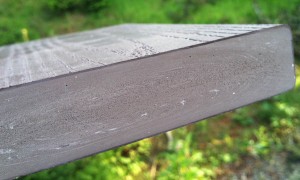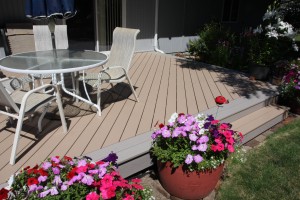So what is co-extrusion anyways?
 When composite deck first came onto the market it was a simple wood fiber plastic mix. Heat and pressure bonded the two components into a durable board. This product changed the decking market forever, less maintenance and no reoccurring staining costs were a great benefit to consumers.
When composite deck first came onto the market it was a simple wood fiber plastic mix. Heat and pressure bonded the two components into a durable board. This product changed the decking market forever, less maintenance and no reoccurring staining costs were a great benefit to consumers.
There were some shortcomings though. Traditional composites could be scratched, not easily but, just the same, on a product designed to last at least 25 years, things happen… Color fastness was an issue too, also resistance to staining. Barbeque grease was the bane of composite decking oil-based product meets grease, not good. Azek products introduced their cellular PVC and co-extruded boards and the market changed dramatically. Initially other manufacturers followed with their own PVC boards but soon marketed their traditional composite with the co-extruded layer added.
Ok, so what is co-extrusion anyways. Simply put, when the board is formed, extruded from a machine heated and under pressure, it comes out with a layer of a different material over it. In most cases it appears to be a polymer layer, trade secrets so no manufacturer is forthcoming with it’s exact nature. In the photo you can see quite clearly the outer layer and the inner core.Image
What does this mean for the consumer? The outer layer is a much harder and stain resistant material than the inner core. The polymer layer is also capable of being died in rich and variegated colors that are quite striking. With the exception of Earthwood (see related post) I find it difficult to imagine a scenario where damage could be incurred to a co extruded board. They are just that tough. The color fastness is absolute, I’ve compared long installed material with new pieces and can detect no color shift whatsoever.
I find this development very exciting for the industry. I would encourage any prospective deck buyer to consider using a board of this construction, it really is that good.

